Growing, creating new dahlias and sharing them wide is part of our personal and collective ancestral healing work as well as offering for future generations of all species to come.
Which, ha, is quite a mouthful!
And there’s so much more to say ~
In the meantime, we’re grateful to share the burgeoning green cuttings of these brilliant beings with us all at Garden Store! Starting April 27th and 28th, Fruition’s Tree Weekend, we’ll share cuttings of all our Fruition-bred dahlia varieties, first-come first-served, and we’re so honored to share them with you.
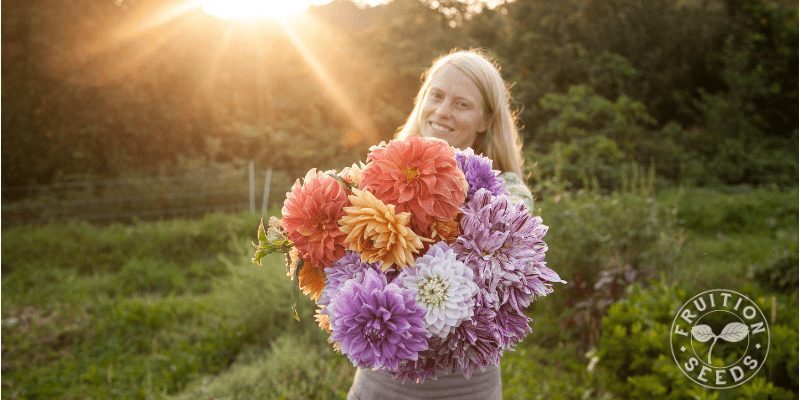
What’s in a name?
Maria and I were potting up dahlias in early April, laughing about how so many of the names of our new varieties are inspired by Robin Wall Kimmerer, adrienne maree brown and Rowen White…
…and I remarked how much I appreciate their words, work and world as an invitation to find and follow our North Stars, as Rowen White so beautifully invites in her ‘North Star Process’…
…which suddenly just seemed so appropriate for this dahlia:
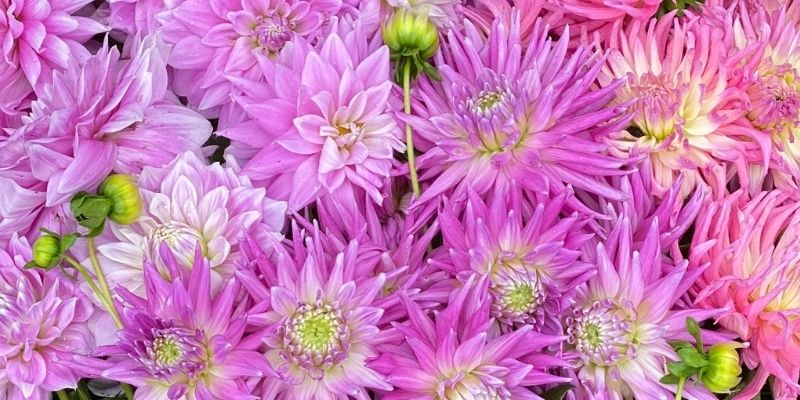
After trialing hundreds of dahlias, looking for early blooming as well as delicious tuber and petal qualities (it’s true: dahlias have co-adapted with humxns in Oaxaca as a food for countless generations…!), we have two favorites. Our second favorite is Star’s Favorite, in the upper right, with long, immensely tender quill-like petals of cream and rose with crunchy tubers both nutty and floral. Our very favorite is Fern Cliff, upper left, with wide lilac petals that taste like floral butter lettuce, absolutely melt-in-your-mouth and worthy of a salad unto themselves. Fern Cliff tubers are reminiscent of Jerusalem Artichoke, juicy and nutty, like the most creamy sweet potato you’ve ever tasted.
We grew several hundred of these dahlias side-by-side in a high tunnel, hoping they would cross and make seeds.
And ohhh they did!
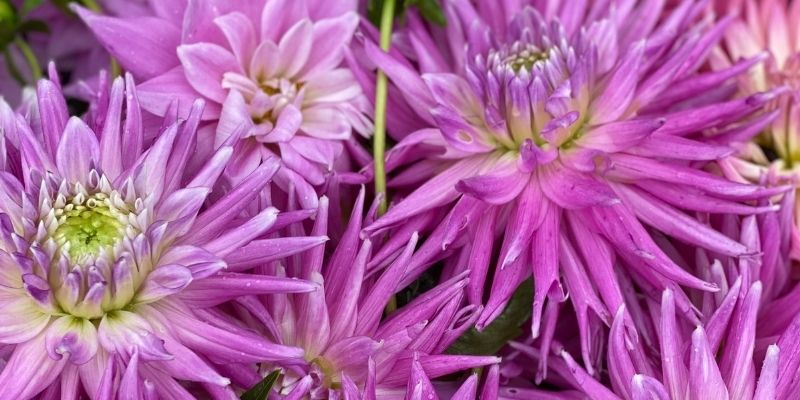
Stepping back: Imagine we’re on Ms Frizzle’s school bus, zooming into the genome of a humxn and then a dahlia. Our humxn genome is diploid and now picture the double helix: we have two pairs of homologous chromosomes that ‘unzip’ and ‘re-zip’ to create new life. Dahlias are octoploids with EIGHT pairs of homologous chromosomes and the permutations possible are nearly unfathomable.
This, among other reasons, is why there are over 50,000 named varieties in the Dahlia Conservation Society…
…and why we were so thrilled to see what happened once we sowed these dahlia seeds!
As we grew them, one plant stood out both as beautiful and as utterly delectable in petal and tuber.
Can you see the family resemblance in the photo below, parents on the sides with the next generation in the center? They’re truly the best of both worlds and utterly new to this world:
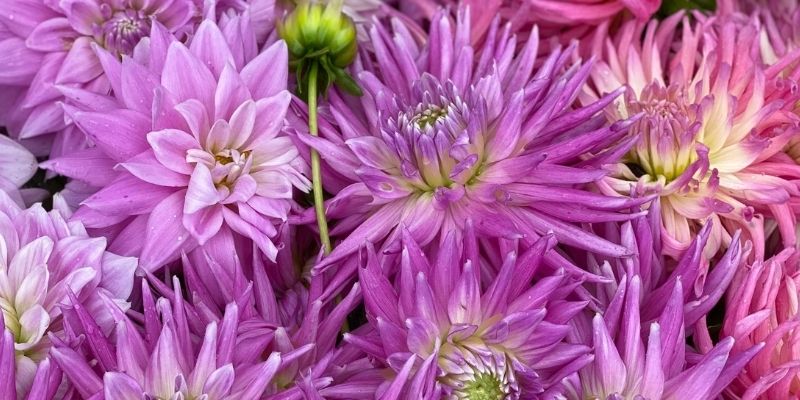
We call this dahlia ‘North Star’ to honor the wisdom of our indigenous leaders as well as the sentience and centrality of plants as co-adaptive guides in these culturally stark times, trusting in their and our collective ability to find our way, do hard things and grow through countless cycles of life, love, loss, longing, belovedness and death as we root ourselves in ecologies and cultures of courage and care.
What do you see as your personal and our collective North Stars in these times?
How are gardens invitations to grow so much more than food and flowers?
How can we possibly say thank you?
We do with every seed, every bloom and every breath.
Sow Seeds & Sing Songs,

& the whole Fruition Crew
ps
And did we mention? We are just so honored to share these dahlias with you, Friends ~
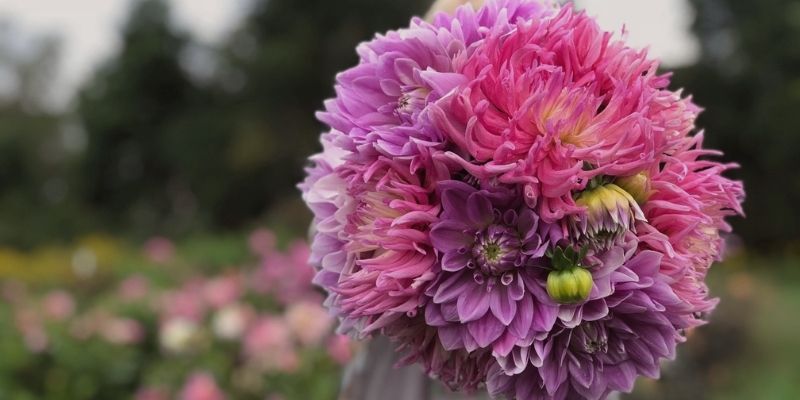

Fabulous! I never knew dahlias were edible! How do you cook the tubers?